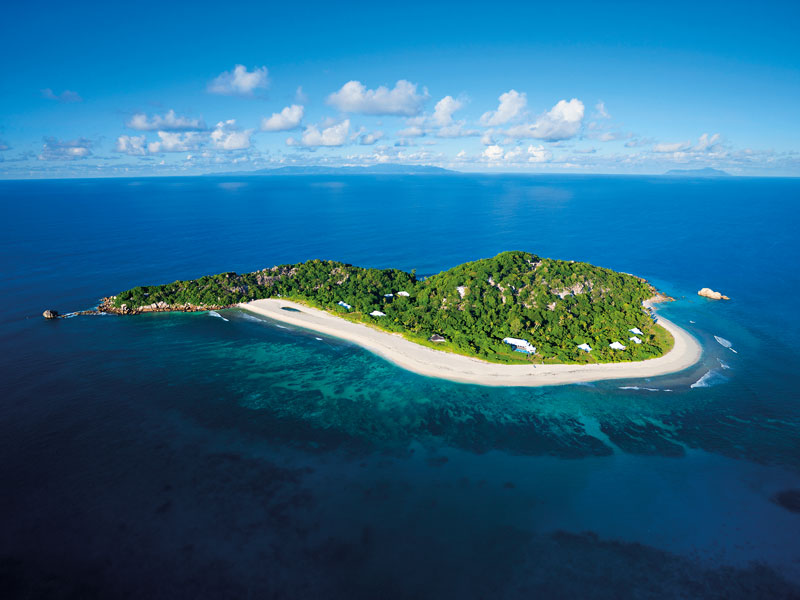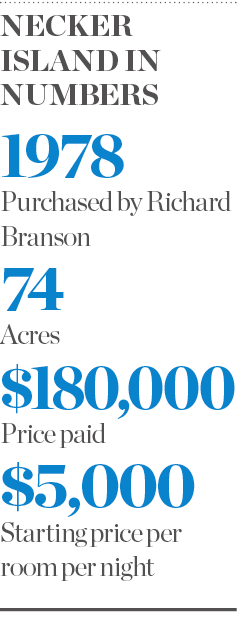
Though viewed as the grandest of luxury purchases, private islands are not quite as inaccessible as they first appear. Prices vary hugely depending on location, size and a number of other factors, meaning buying a personal tropical paradise may be attainable after all. Choosing to purchase an island, however, is not a decision that should be taken lightly. Prospective buyers should take care to assess all the local regulations so they understand the logistics of owning an island.
There are also environmental considerations to keep in mind. Islands often represent some of the few unspoiled places left on the planet, and creating residential developments on them will disturb the fragile ecosystems that have evolved untouched by humanity. Plus, regulations may prevent any development from taking place at all. So even if financing the purchase is straightforward, living on an island might not be.
The price of paradise
Far from being the preserve of billionaires, the cheapest private islands can be bought for as little as €35,000 – expensive, but not out of reach. Of course, at the top end, islands can cost millions of euros, but with each island being completely unique, it is difficult to talk about average prices.
The best-quality islands – those with all the essential amenities already in place – rarely come up for sale and when they do, fetch a high price
“Prices vary depending on a multitude of factors, not just location,” Farhad Vladi, CEO and Founder of Vladi Private Islands, told European CEO. “The current state of development, the potential for new development, topography and accessibility have a large part to play in determining an island’s value. There’s also an emotional value that must be taken into account. Private islands can’t be compared with investment properties. They’re lifestyle objects – places to escape the pressures of the professional world, to enjoy time with families and friends and to unwind and reconnect with nature.”
At the moment, prices found in the online portfolio at Vladi Private Islands range from approximately €53,000 (Round Island, Canada) to €84.7m (Pumpkin Key, US). Islands offered by other vendors show similar levels of variation and, for off-market islands and resort properties, prices can climb higher still. Regions that offer political stability and are seen as safe havens for investors, such as New Zealand, are extremely popular among buyers, although the most expensive islands tend to be found in places like the Caribbean and the Mediterranean – destinations where the weather is warm, accessibility is good and demand outstrips the supply. For some parts of the world, the climate makes a significant difference to how much an island can be used.
“Typically, prices are very regional,” explained Chris Krolow, CEO of Private Islands. “In Northern Ontario and on the east coast of Canada, where the islands are frozen for most of the year, prices are lower. In other parts of the country, like Georgian Bay, which is only a few hours from Toronto and major cities in the US, valuations can be much higher. So there’s a lot of variation even within the same country.”
Another major issue affecting the price of an island, regardless of where they are located, is how developed they are. Some are ready to be lived on almost immediately after purchase; others will need some work. The best-quality islands – those with all the essential amenities already in place – rarely come up for sale and when they do, fetch a high price.
Cut off
Although the prospect of owning an island might seem attractive, the reality may not live up to expectations. In particular, many island buyers will want to add a personal touch to their new home or getaway. Perhaps they want to extend the existing property, build an entirely new one or construct new amenities. This is usually when problems arise.

The seclusion that island life provides is one of its main draws, but this brings challenges as well. Getting the materials needed to complete a project or the help required to carry out maintenance can cost significantly more than it would on the mainland. Additionally, there will be no restaurants, shops or other services nearby.
“In terms of purchasing and developing an island, the logistical challenges are very much dependent on the location and the remoteness of the islands,” Vladi explained. “It’s very important to do your homework regarding planning permission regulations, for example. While it’s generally possible to receive permission to build a family home on an island in Canada within four to six weeks, other countries require much more patience and much more paperwork.”
Another potential hurdle that must be cleared is an ecological one. Islands are environmentally sensitive locations, sometimes containing a diversity of natural species that must be protected. For anyone looking to develop an island, this is something else that has to be considered.
“Depending on where it is located, an island might be protected and owners may need to carry out an environmental assessment. This costs money, takes time and, crucially, must be completed before any building work can begin,” Krolow said. “One of the problems in our industry is that a lot of people don’t want to spend significant sums of money purchasing an island, only to then find out that there’s a limit to what they can do with it. A lot of the time we’re pushing existing owners to get their environmental assessments done as quickly as possible.”
That being said, assuming all the relevant permissions are in place, the process of developing an island is a lot more straightforward than it was 15 years ago. Technological advancements have made things like producing electricity and water easier and more environmentally friendly. Access is also a lot simpler. So, while it’s important that buyers are aware of any potential logistical challenges concerning further development, in the majority of cases, they are surmountable.
Build and they will come
Privacy, tranquillity and unspoilt nature may be the main attractions for some island owners, but every buyer has their own reasons for their purchase. For some, an island has significant moneymaking potential: although islands could hardly be described as cheap, they can appreciate in value over time and provide a variety of
commercial opportunities.
“A lot of our buyers prefer to opt for a mixture of private and commercial use,” Olaf Lock, Director of Travel at Vladi Private Islands, said. “Sir Richard Branson was the pioneer of this style of island ownership and started renting out his island whenever he was travelling elsewhere. It’s a great way to cover any maintenance costs and is a model followed by a large percentage of our island owners.”
As Lock mentions, the Virgin Group founder is one of the best-known celebrity island owners. Back in 1978, Branson purchased the 74-acre Necker Island in the British Virgin Islands for $180,000 (€160,000). Over a number of years, the entrepreneur has more than made his money back by constructing a luxurious resort that attracts visitors eager to enjoy a slice of paradise. Rooms on the island start at $5,000 (€4,450) a night.
However, prospective island owners should be wary of thinking that their next purchase will provide them with a steady source of income. Access will be crucial to guaranteeing that visitors can reach the island in the first place, so proximity to an international airport is essential. Island developers then have to consider onward transport options. If guests have to take an intercontinental flight, spend a few hours on the road and then take a lengthy boat trip, they may just opt for a more convenient holiday destination instead.
Sourcing reliable and experienced caretakers to keep an eye on things and make sure guests are well taken care of is also crucial. Finally, effective marketing will be needed to attract people to the island. Experienced travel partners can help ensure that an island reaches the right kind of client.
The whole wide world
It is impossible to say just how many islands are in the world, but with some countries, such as Finland, possessing hundreds of thousands of islands alone, it is likely that the total global figure surpasses one million. When it comes to the market for island purchases, however, a few hot spots become apparent.
“The market for island buying is currently very healthy – particularly when it comes to high-quality lifestyle islands,” explained Emma Sharples, who works in the islands sales and rentals team at Vladi Private Islands. “Last year alone, we were fortunate to complete several significant deals in Europe, the Caribbean and North America. The Indian Ocean is also undergoing something of a boom at the moment – the demand for resort islands is really taking off, reflecting the growing trend for private-island vacations.”
It’s also worth noting that, although islands can be found all across the globe, market differences can be significant. Caribbean islands are generally more expensive because the region is well connected internationally through a number of different airlines. This opens the market up to a lot of international buyers. On the other hand, in regions like Asia and Oceania, the majority of islands are larger and only available leasehold. This means that, while they may be good prospects for large development firms, they rarely attract interest from private buyers.
“Regarding Europe, there’s the Scandinavian market where islands are primarily purchased by locals,” Krolow said. “Like Canada, this market is also very seasonal. Then the market that everyone assumes is the big one is the Mediterranean. But there can be so much bureaucracy here that it can be a difficult one to get involved in.”
Unfortunately, there is another issue that prospective buyers must take into account: climate change. Most islands are low-lying, which leaves properties highly susceptible to changes in sea levels. There is also a growing body of evidence that rising temperatures are leading to an increased intensity of natural disasters. For islands located in high-risk areas, this is a major concern. In September 2017, Hurricane Irma – the strongest storm to exist in the open Atlantic – destroyed most of the buildings and vegetation on Branson’s Necker Island.
For anyone looking to buy an island, this is another factor that must be considered, alongside price, accessibility, climate and regulatory standards. Collectively, it can make for a lot to weigh up, but a purchase as significant as an island should be approached carefully. Fortunately, the market is more varied than many expect, and for those looking for assistance, plenty of established vendors are willing to offer a helping hand.

